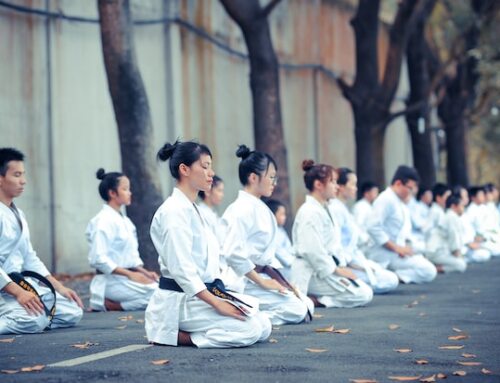I currently work as a fitness coach, and I’d say 95% of new clients entering our gym want to lose weight in some way.
The rest usually want to add muscle mass.
Notice the interesting dichotomy: you’re either adding weight or losing it, albeit in different forms. More on this later.
At the end of the day, many folks just want to look better. That was a lot of my motivation for starting in fitness, and there’s absolutely zero shame in wanting it.
However, there’s a problem with how people think about toning up and losing weight. They tend to think that in order to lose weight you need to do a bunch of intense cardio and/or eat less.
I’m here to tell you that mere cardio and diet likely won’t get you what you want. And even if they do, you’ll be missing out on a whole bunch of benefits of mainstream fitness’ neglected child.
But first, a quick fitness primer for some context.
Energy Deficit: Less Fuel or More Engine?
Most people simply want to lose weight and be thinner. They want to fit in their old clothes, lose the fat around their face, waist, and butt, and have a healthier look.
The goal here is just weight loss, and the way you do that is (supposedly) simple.
Hope you don’t mind some basic math:
Calories In − Calories Used/Burned = Calories turned into fat (when # is positive) or calories burned (when # is negative)
More calories used than intaken means that your body uses extra energy stores, which include but are not limited to fat. This will, in theory, lead to less energy stored and hopefully less fat.
Unfortunately, it’s not that simple.
Turns out the body is smart, and years of evolution taught it to be incredibly efficient. So efficient, in fact, that you may find that the simple formula of “Calories In − Calories Out” won’t quite be enough for you to lose the weight – specifically, the fat – that you want to lose.
During my undergraduate degree, a professor of mine used the illustration of a plane to explain the importance of a particular kind of training that often gets overlooked.
Say you’re a pilot flying to LA from Sydney.
Partway through the journey, you find out that someone forgot to fill up the gas tank.
At your current weight and speed, you’re not going to be able to make it because the fuel will deplete.
Option one: reduce the weight the plane is carrying. Obviously, a lighter load will take less energy to fly across the ocean. This plane has hundreds of passengers, but it also carries their luggage, food and drink supplies, and the gas itself. Maybe you toss that stuff out and make the plane lighter?
Option two: turn off some of the engines. This particular plane has four engines, but you could still fly with just two. This would mean you’d use half the amount of fuel for a relatively minimal decrease in speed.
It turns out that the second option is the more efficient.
Outsmart Your Body: Make Muscles Essential
Interestingly, the body isn’t afraid to “cut the engines” when it undergoes a significant caloric deficit.
Muscles, kind of like the body’s engines, use a lot of energy. The body, thinking like a smart pilot, ditches the energy-consuming engines in order to save some energy so it can survive longer.
To survive you don’t always need to be strong, but you definitely need energy.
The take-away point is that eating less, lowering the calorie count, or even burning more calories might not be enough to lose the fat that you want to lose, since the body may cut muscle and try and save fat stores.
That’s the bad news.
The good news? Ensuring that your body keeps its muscles and uses fat is easier than you think.
It turns out that resistance training ensures stronger, more sizeable muscles and, in turn, more fat burned.
It’s recommended in any good set of guidelines. But what is it exactly? Trek Education defines it well:
Resistance training is any exercise that causes the muscles to contract against an external resistance with the expectation of increases in strength, power, hypertrophy, and/or endurance.
In plain English, it’s any physical activity where you’re putting a load on muscles, including weightlifting, pushups and other bodyweight work.
Cardio Kills Gains, Bro
Going back to our plane analogy, exercising these muscles basically makes sure that our body doesn’t cut the engines. The reason it does this is that the muscles are clearly being used by the body… so the body thinks, “I need these, so I can’t cut them. Guess I’ll have to just use up the fat instead.”
This is why you’ll often hear the jacked-gym-rat type saying that you should avoid cardio if you want to get big. It’s because there’s some truth to it: cardio focuses on burning calories and not on applying heavy pressure to muscles (especially the upper body).
The body notices this and adjusts accordingly. In order to become more efficient, it will decrease muscle protein synthesis (an ongoing process of muscle building and retaining) and let the muscles get smaller to save energy.
Case in point: the body types of long-distance runners in the Olympics compared to those of weight-lifters (or even sprinters, who utilize a similar type of muscle fibers for strong, quick bursts of energy). The former don’t train their muscles for strength, and their bodies keep muscles small for the sake of low-energy efficiency. The latter need large muscles but don’t tend to use them for extended periods. The result? Well, just google search a body type comparison, and you’ll see what I mean.
Bonus Benefits of Resistance Training
In terms of our plane analogy, resistance training cues the body to keep the engines (muscles) which, in turn, means we keep burning fuel.
In fitness terms, resistance training increases (or at least maintains) your metabolism (i.e. how many calories you burn) overall.
You heard that right: more muscle means more fat burned in less time. These metabolic benefits happen in two main ways:
First, after adequate resistance training, you burn a bit extra over the next 48–72 hours. This is what my gym loves to call the “afterburn” effect, and a good cardio session can give you something similar (though those tend to only last about 24 hours). Basically, the body burns energy trying to heal and recover from the stress you put on it during your workout.
Second, keeping your muscles bigger ensures that the body will burn more energy all of the time. After all, these muscles take energy to fuel and sustain even when they’re just chilling.
This means that it’s going to be easier to lose weight and to keep it off. Who wouldn’t want that?
Now keep in mind that you don’t need to be jacked for this to be true. We’re talking relative size here. The key is having a healthy muscle mass that is functional, looks good, and helps you keep weight off.
There’s one final “tone-up” body benefit of resistance exercise that people don’t think about, and that’s the increase in muscle size. This one isn’t metabolic so much as aesthetic. In other words, it makes things look nicer. Just like putting plastic wrap over a larger surface, the skin gets pulled tighter over muscles and the result is a more “toned” look. Yes, losing fat can give you the same benefit, but you might as well have both angles working for you, especially given the above metabolic benefits.
Resistance exercise will ensure that you maintain muscle while you’re in calorie deficit, and it can increase muscle mass over time if you’re eating more protein-dense foods in particular.
(Aside: some argue that it’s possible to very slowly increase muscle mass over time even under caloric deficit. Just as an FYI.)
There you have it folks. From muscle definition to keeping weight off, resistance training is your friend.
Stay tuned for more fitness tips and sign up below if you want to get notified as soon as they’re posted!
This post is part of a series:
Stop Using the Scale: An Argument for Measuring Fitness by Appearance Instead of Weight






